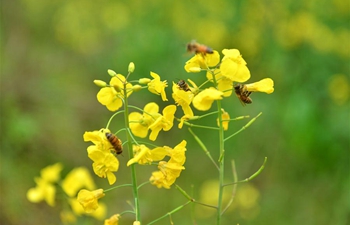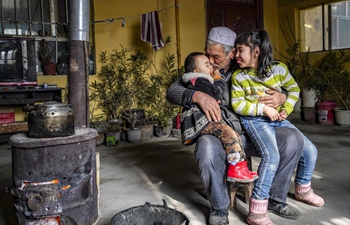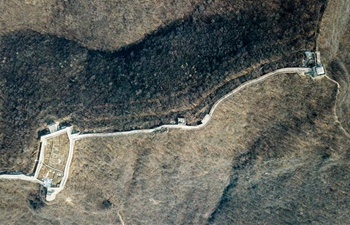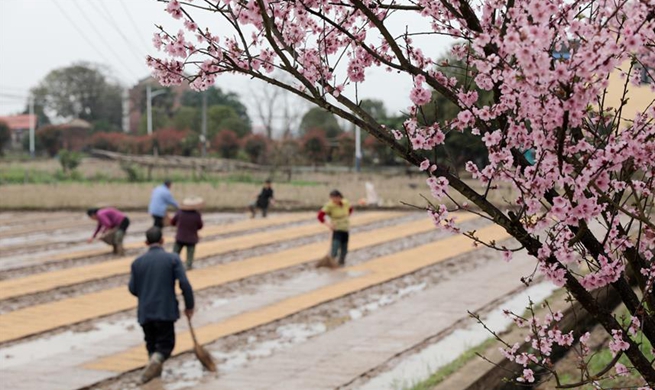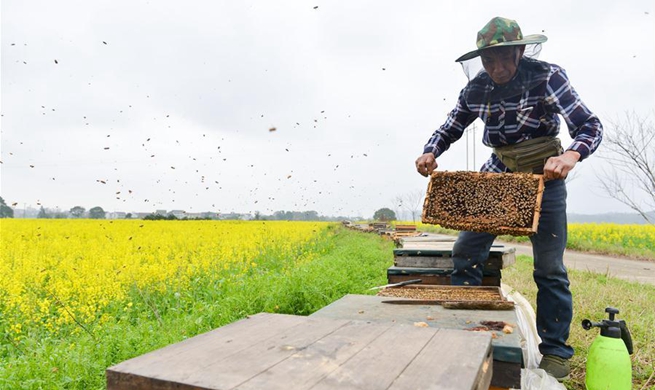ULAN BATOR, March 19 (Xinhua) -- Merely 3,800 Mongolian Saiga antelopes, a critically endangered species, existed in Mongolia at the end of 2018, down nearly 40 percent year on year, according to the World Wide Fund for Nature (WWF)-Mongolia on Tuesday.
The decline is mainly due to drought-related food shortage, WWF-Mongolia Director Dorjgurkhem Batbold told Xinhua.
"The Saiga antelope population of Mongolia has been very unstable for many years. Several factors, including infectious diseases, harsh weather conditions and poaching, have negatively affected the growth of the population," said Batbold.
The species' population has suffered a roller coaster since 2001 when its number declined to only 750 following a summer drought and a harsh winter, he said.
Due to continuous efforts by the WWF-Mongolia and MAVA foundation, it had risen to 14,000 by 2016, he added. However, a combination of an outbreak of goat plague and the extreme wintry weather locally known as "dzud" in 2017 reduced the number to 5,000.
To help the species overcome harsh winters, experts from the WWF have been taking desperate emergency actions, including putting a ton of additional hay or 400 bundles in the animal's ranges over the past winter, according to Batbold.
In addition, the WWF-Mongolia started implementing an initiative called "GG-6" (Great Gobi's or Gobi's Gracious Six) since 2016 to sustain the Gobi's ecosystem using six iconic species, among which are the Mongolian Saiga antelopes, he said.
"Joint efforts are needed to protect endangered species," Batbold said, urging governments and international non-governmental organizations to protect the Saiga antelopes and others.
To prevent the extinction of the antelopes that currently live in western Mongolian provinces, including Govi-Altai, Khovd and Uvs, it is necessary to relocate them, according to the WWF-Mongolia.
This year, the WWF-Mongolia is planning to conduct studies on relocation within Mongolia, and more funding is required for the endeavor in the years ahead, said Batbold.




